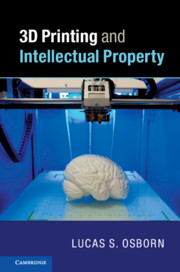Refine search
Actions for selected content:
48226 results in Computer Science
INTRODUCTION TO THE SPECIAL ISSUE ON LEARNING, OPTIMIZATION, AND THEORY OF G-NETWORKS
-
- Journal:
- Probability in the Engineering and Informational Sciences / Volume 35 / Issue 1 / January 2021
- Published online by Cambridge University Press:
- 29 July 2019, pp. 1-5
-
- Article
-
- You have access
- Export citation
OPTIMAL CONTROL POLICIES FOR AN M/M/1 QUEUE WITH A REMOVABLE SERVER AND DYNAMIC SERVICE RATES
-
- Journal:
- Probability in the Engineering and Informational Sciences / Volume 35 / Issue 2 / April 2021
- Published online by Cambridge University Press:
- 29 July 2019, pp. 189-209
-
- Article
- Export citation
Pre-training with non-expert human demonstration for deep reinforcement learning
- Part of
-
- Journal:
- The Knowledge Engineering Review / Volume 34 / 2019
- Published online by Cambridge University Press:
- 26 July 2019, e10
-
- Article
- Export citation
Preface
-
- Journal:
- Combinatorics, Probability and Computing / Volume 28 / Issue 4 / July 2019
- Published online by Cambridge University Press:
- 25 July 2019, pp. 483-484
-
- Article
-
- You have access
- Export citation
Expected Maximum Block Size in Critical Random Graphs
- Part of
-
- Journal:
- Combinatorics, Probability and Computing / Volume 28 / Issue 4 / July 2019
- Published online by Cambridge University Press:
- 25 July 2019, pp. 638-655
-
- Article
- Export citation
An overview of word and sense similarity
-
- Journal:
- Natural Language Engineering / Volume 25 / Issue 6 / November 2019
- Published online by Cambridge University Press:
- 25 July 2019, pp. 693-714
-
- Article
-
- You have access
- Open access
- HTML
- Export citation
On Komlós’ tiling theorem in random graphs
- Part of
-
- Journal:
- Combinatorics, Probability and Computing / Volume 29 / Issue 1 / January 2020
- Published online by Cambridge University Press:
- 25 July 2019, pp. 113-127
-
- Article
- Export citation
“If you don’t improve, what’s the point?” Investigating the impact of a “flipped” online exchange in teacher education
-
- Article
-
- You have access
- Open access
- HTML
- Export citation

3D Printing and Intellectual Property
-
- Published online:
- 24 July 2019
- Print publication:
- 05 September 2019
Measuring diachronic language distance using perplexity: Application to English, Portuguese, and Spanish
-
- Journal:
- Natural Language Engineering / Volume 26 / Issue 4 / July 2020
- Published online by Cambridge University Press:
- 24 July 2019, pp. 433-454
-
- Article
- Export citation
Time-sensitive resource re-allocation strategy for interdependent continuous tasks
- Part of
-
- Journal:
- The Knowledge Engineering Review / Volume 34 / 2019
- Published online by Cambridge University Press:
- 22 July 2019, e9
-
- Article
- Export citation
Erratum to ‘On Percolation and the Bunkbed Conjecture’
-
- Journal:
- Combinatorics, Probability and Computing / Volume 28 / Issue 6 / November 2019
- Published online by Cambridge University Press:
- 22 July 2019, pp. 917-918
-
- Article
-
- You have access
- Export citation








